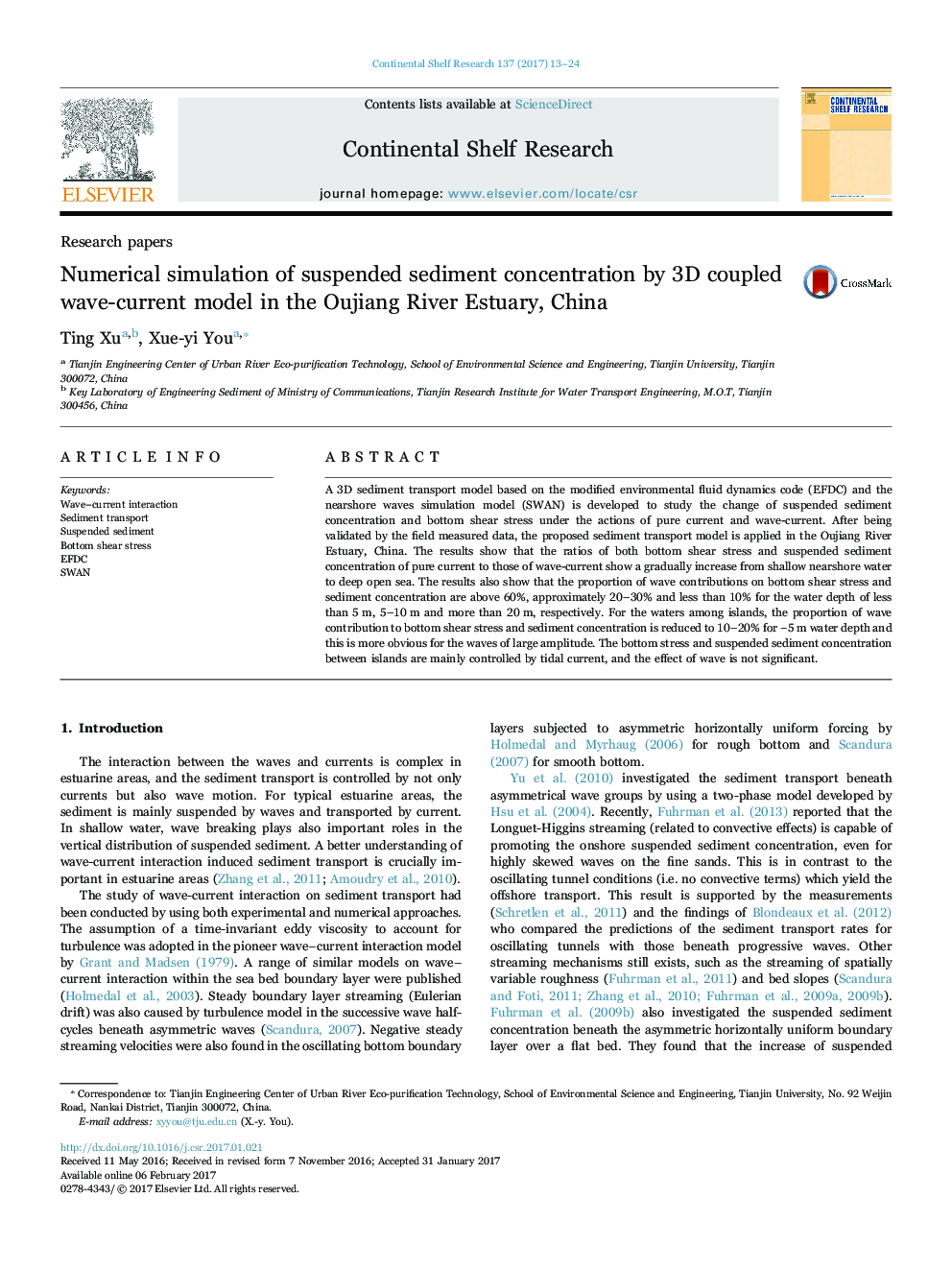| کد مقاله | کد نشریه | سال انتشار | مقاله انگلیسی | نسخه تمام متن |
|---|---|---|---|---|
| 5764580 | 1626076 | 2017 | 12 صفحه PDF | دانلود رایگان |

- A 3D sediment transport model based on the coupled model of modified EFDC and SWAN is developed.
- The coupled model is validated by field observations.
- The effects of waves on the sediment resuspension and transport cannot be neglected in shallow coastal waters.
- The change of suspended sediment concentration was compared at the bottom shear stress with and without the wave effects.
A 3D sediment transport model based on the modified environmental fluid dynamics code (EFDC) and the nearshore waves simulation model (SWAN) is developed to study the change of suspended sediment concentration and bottom shear stress under the actions of pure current and wave-current. After being validated by the field measured data, the proposed sediment transport model is applied in the Oujiang River Estuary, China. The results show that the ratios of both bottom shear stress and suspended sediment concentration of pure current to those of wave-current show a gradually increase from shallow nearshore water to deep open sea. The results also show that the proportion of wave contributions on bottom shear stress and sediment concentration are above 60%, approximately 20-30% and less than 10% for the water depth of less than 5Â m, 5-10Â m and more than 20Â m, respectively. For the waters among islands, the proportion of wave contribution to bottom shear stress and sediment concentration is reduced to 10-20% for â5Â m water depth and this is more obvious for the waves of large amplitude. The bottom stress and suspended sediment concentration between islands are mainly controlled by tidal current, and the effect of wave is not significant.
Journal: Continental Shelf Research - Volume 137, 1 April 2017, Pages 13-24